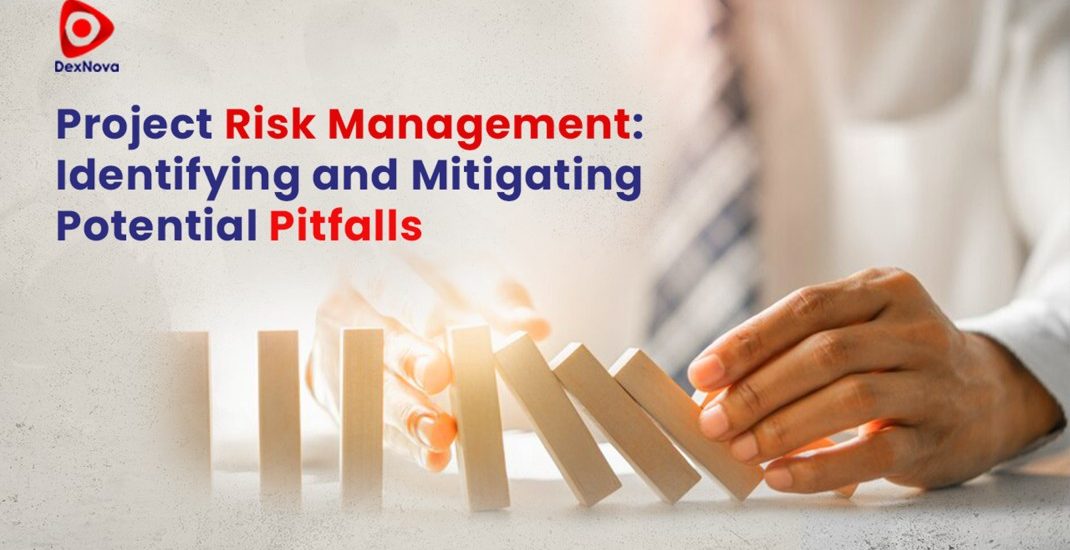Project Risk Management: Identifying and Mitigating Potential Pitfalls
- July 11, 2023
- Posted by: dexnovaconsulting
- Category: Articles

Project Risk Management: Identifying and Mitigating Potential Pitfalls
Introduction
In today’s dynamic and complicated business climate, organizations take on a variety of initiatives to attain their aims and objectives. However, enterprises are fraught with uncertainties and possible dangers that might jeopardize their success. This is where project risk management enters the picture. Organizations may reduce the negative impact on their projects and raise the chance of project success by recognizing and managing possible risks. This article will explain the significance of project risk management and tactics for identifying and mitigating potential issues.
The Significance of Project Risk Management:
Project risk management is a systematic process that involves detecting, analyzing, and minimizing possible risks to a project’s success. It is a crucial part of project management because it enables firms to proactively handle uncertainty and prevent it from becoming severe. Organizations may improve project outcomes, boost stakeholder satisfaction, and safeguard their investments by using effective risk management techniques.
Identifying Potential Pitfalls:
The preliminary step of project risk management is identifying possible dangers that may develop throughout the project. This entails thoroughly assessing the project’s internal and external environments to identify hazards that may jeopardize project objectives. Some well-known sources of project hazards include:
- Technical Risks: These risks arise from the complexity or novelty of the technology or processes involved in the project. Examples include system failures, compatibility issues, or insufficient expertise.
- Resource Risks: These risks stem from inadequate resource allocation, such as limited budget, human resources shortages, or unavailability of essential equipment or materials.
- Schedule Risks: These risks pertain to delays or disruptions that may occur during the project timeline. Poor time management, unexpected events, or dependencies on external parties can contribute to schedule risks.
- Stakeholder Risks: These risks are associated with project stakeholders’ diverse interests and expectations. Conflicts, resistance to change, or insufficient stakeholder engagement can lead to project setbacks.
- External Risks: These risks originate from factors outside the project’s direct control. Market fluctuations, legal and regulatory changes, natural disasters, or geopolitical events can all pose significant threats to project success.
Mitigating Potential Pitfalls:
Once potential pitfalls are identified, project managers must develop effective strategies to mitigate these risks. The following steps can guide the risk mitigation process:
- Risk Assessment: Assess each identified risk’s potential impact and probability. Prioritize risks based on their severity and likelihood of occurrence. This step enables project managers to focus on the most critical risks.
- Risk Response Planning: Develop appropriate strategies to address each identified risk. Common risk response strategies include avoiding the risk, transferring the risk through insurance or contracts, mitigating the risk through preventive actions, or accepting the risk while establishing contingency plans.
- Risk Monitoring and Control: Regularly monitor identified risks throughout the project lifecycle. This involves tracking risk indicators, evaluating their effectiveness, and adjusting as necessary. Timely risk reporting and communication are crucial to ensure stakeholders remain informed.
- Contingency Planning: Prepare contingency plans to handle potential risks that cannot be fully mitigated. These plans outline alternative courses of action if certain risks materialize. Contingency plans can minimize disruptions and ensure project progress in the face of unexpected events.
- Lessons Learned: Conduct a comprehensive review of the risk management process after project completion. Identify areas of improvement and capture lessons learned for future projects. This step enhances the organization’s risk management capabilities and fosters a culture of continuous improvement.
Conclusion
Project risk management is an indispensable aspect of successful project execution. Organizations can minimize project disruptions, optimize resource allocation, and enhance project outcomes by proactively identifying and mitigating potential pitfalls. Effective risk management requires a systematic approach that includes risk identification, assessment, response planning, monitoring, and contingency planning. By embracing risk management as an integral part of project management, organizations can confidently navigate uncertainties and achieve project success.
Remember, while it is impossible to eliminate all risks, the goal is to anticipate and manage them effectively to reduce their negative impact.
